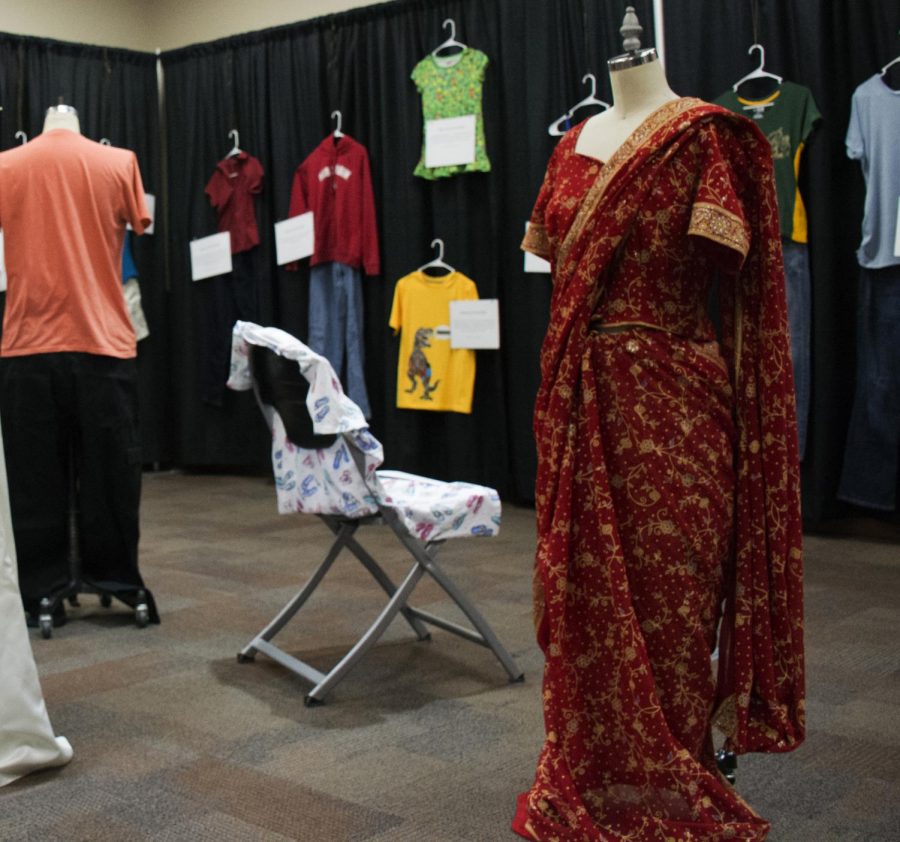Campus Brings Awareness to Sexual Assault
UW-Platteville starts off Sexual Assault Awareness Month Dispelling a Myth.
What were you wearing? This is the most common question asked when it comes to rape victims. What most people don’t know is that this is a culture myth. The What Were You Wearing? installation gave a response to dispel the myth. This question damaged them because that’s not why they were assaulted. What they wore doesn’t make sense in why they were assaulted, it makes the victim feel like it is their own fault that they were assaulted.
Through the week of April 1stto April 5th, the University of Wisconsin-Platteville campus showed an installation to show what types of clothes students think of when someone asks about rape. The installation started in September 2013 after Dr. Wyandt-Hiebert and Jen Brockman attended a conference hosted by the Arkansas Coalition Against Sexual Assault in Little Rock. The conference packet contained a poem by Mary Simmerling called “What I Was Wearing,” written in the early 2000s. Intrigued and moved by the poem, Dr. Wyandt-Hiebert and Jen Brockman wanted to find a way to create a visual representation of the poem. As the concept for the installation, Jen Brockman contacted Mary Simmerling that summer and was given permission to utilize her poem as a connection to the installation.
“In September 2013, the Connecticut Lounge in the Student Union at the University of Arkansas was reserved to host the “What Were You Wearing?” Student-Survivor Art Installation for Sexual Assault Awareness Month in April 2014. Throughout the year student-survivors at the University of Arkansas voluntarily contributed briefly of what they were wearing when they experienced sexual violence through personal interviews with Dr. Wyandt-Hiebert and Jen Brockman. These descriptions were used to recreate the outfits worn during the assaults. Clothing for the installation was donated by Peace at Home Thrift Store in Fayetteville, Arkansas. Outfits displayed in the installation are not the actual clothing worn by the survivors, but visual representations of their stories.” Since the installation at University of Arkansas, seven different colleges and universities in Arkansas, Iowa and Kansas have utilized the installation. As it expands, more student- survivors contributed outfit descriptions from a variety of Midwest institutions.
According to Dean of Students’ Melissa Stoner, the installation covered and displayed clothes of different genders on three walls, which were inspired by students of other colleges and contained a story next to each piece of clothing. In the center there was a pile of clothes, and on the fourth wall is a wall of resources and handouts on where to go for help or more information. This installation was created by professionals with the help of professors who met with students who wanted to share their stories. They spoke to many students throughout the years and created surveys that are still taken by every freshman.
When learning about sexual assault, it is important to consider some resources on campus that the student and community can go to if something like this were to happen. The resources are split up between confidential and will be kept silent, and reporting and will be reported to other sources to help. The confidential resources are helpers through health care include Southwest Health, Student Health Services located in Royce Hall, neighborhood health partners, Sexual Assault Nurse Examiners, Riverview Center, and your health care provider. Advocacy resources include Family Advocates, Inc., and through counseling resources including University Counseling Services located in Royce Hall and your personal counseling provider. The reporting resources that report to higher sources are through student conduct such as the Dean and Assistant Dean of Students; law enforcement such as Campus Police, student employees and Platteville Police; and through housing such as the Department of Residence Life, resident assistants and senior assistants.
These resources are where the community and students can go to get help from the serious situations. To feel safer, the campus already has safety resources any student can use at any time. If it gets dark out and you don’t feel safe walking home, Safe Walk can be called and a police officer will come to walk you home. If you know when you are going to be home, you can download the Campus Police’s Rave App that will call an emergency contact if you’re not home by the instructed time on the app. Lastly if you decide to walk home but suddenly feel scared and think someone may be following you, the call boxes across campus are able to contact the campus police.
While resources are good to have and be aware of, it’s good to know how we can make the community a safer place so these assaults won’t occur. Some things students can do to help is look out and support your friends. If they are out, make sure you know where they are. Participate in events around campus to learn more about how to stop assaults or to help those who have already been assaulted. Also participate in Bystander Prevention to learn when you see something, you should say something.




